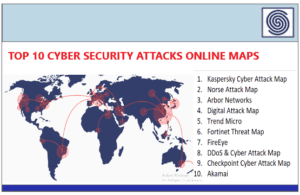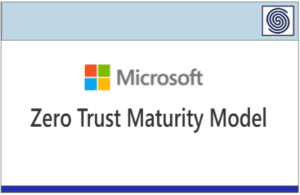Source: securityboulevard.com – Author: John D. Boyle
When the Beatles sang the famous lyric “She came in through the bathroom window,” they were riffing on a real event, a fan who bypassed the front door and broke into Paul McCartney’s home. It was a metaphor for intrusion from the unexpected. In 2025, it’s also a strikingly accurate portrait of how cybercriminals are infiltrating modern companies. By targeting the home life of key personnel.
Today’s attackers aren’t trying to brute-force their way into hardened corporate systems. They’re slipping in sideways, through compromised home routers, deepfaked video calls, phishing emails sent to spouses and children, and passwords recycled across personal and professional accounts. And the target? The C-suite, board members, business unit executives, key personnel and global personas.
A new study by Ponemon Institute, sponsored by BlackCloak, delivers a clear warning: the digital lives of executives have become the new battleground for cyberthreats. The Digital Executive Protection Report 2025 reveals that 51% of executives were personally targeted by a cyberattack in the past two years, up from 43% in 2023. Even more unsettling, 22% of those executives endured between seven and ten attacks over that time span.
The implications aren’t just personal. When threat actors compromise an executive at home, they often gain a foothold into the corporate network, one the internal security team can’t even see.
The Rise of Deepfakes and Severe Consequences for the Unprepared
One of the most disturbing trends in the report is the rapid increase in deepfake attacks. In 2023, 34% of security professionals reported their executives had been targeted by synthetic impersonations. By 2025, that number jumped to 41%.
The most common tactics? Impersonating a trusted colleague, boss or even a family member in a voice call or video message, usually with an urgent request for financial transfers or access to sensitive information. These aren’t generic scams. They’re customized, weaponized and increasingly convincing. Despite this rise, only half of respondents said their organization had any training in place to help executives detect deepfakes. And nearly 40% of that training came only after an attack occurred.
Weak Cyber Hygiene Leads to Physical Risk
The threat no longer ends in the digital realm. According to the report, 50% of security professionals believe that executives at their companies will be the target of a physical attack due to a digital breach. The data points to a chilling trend: when attackers gain access to personally identifiable information (PII) such as home addresses, daily routines, even children’s names, they can cross from cyber to real-world harm.
While 63% of organizations now offer self-defense training to executives (up 15% since 2023), only 43% provide instruction on how to secure personal digital assets. And as the report notes, personal cybersecurity training remains far too reactive, with many companies waiting until after an incident to take action.
Your Home Is the New Threat Vector
Executives don’t live in isolation. They live on home networks with smart TVs, security cameras, tablets and IoT devices, often outside of the control or visibility of corporate security teams. And cybercriminals are exploiting that blind spot.
Theft of intellectual property and unauthorized access to executives’ home networks are now the second and third most common consequences of a breach, after financial loss. Two years ago, those spots were held by regulatory non-compliance and damage to business relationships. The shift is clear: attackers are exploiting personal life as a pathway to corporate data.
Despite this, just 48% of organizations have formally incorporated Digital Executive Protection (DEP) into their security strategies, a modest rise from 42% in 2023. The gap between threat awareness and actual preparedness remains wide.
A Vicious Cycle of Exposure
The report outlines a troubling feedback loop. Security teams lack visibility into executives’ personal devices and accounts. Executives, in turn, are often unaware of the risks or unwilling to mix personal privacy with corporate oversight. And so, the vulnerabilities remain, untouched and unaddressed.
Sixty-eight percent of security professionals believe it’s likely an executive at their organization would reuse a compromised personal password within the company. Yet the tools and authority to manage that risk are rarely in place. Difficulty is widespread: 74% of professionals say they struggle to monitor personal devices. Sixty-seven percent have limited insight into email accounts. And 66% cite challenges in understanding executives’ online privacy exposure. As a result, many organizations remain exposed and blind to these growing threats.
DEP: A New Kind of Security Perimeter
BlackCloak is leading the charge in reshaping how organizations think about executive protection. Its Digital Executive Protection (DEP) platform takes a holistic, privacy-respecting approach to safeguarding the digital lives of executives and their families, without burdening internal security teams.
The DEP framework includes:
- Digital footprint reduction: Removing exposed personal information from public sources and data brokers.
- Device and network monitoring: Scanning for threats across personal laptops, phones, and smart home tech.
- Education and training: Helping executives and family members spot phishing, deepfakes, and social engineering attempts.
- Concierge support and incident response: Offering real-time help when something seems suspicious or goes wrong.
“Executives aren’t cybersecurity experts,” said BlackCloak Founder and CEO Dr. Chris Pierson. “They don’t need more tools to manage. They need trusted protection that fits into their lives, not just their jobs.”
Human-Centric Security Is the New Imperative
The perimeter has moved. The threat surface now includes the home router, the smartwatch, the family tablet, and the inbox of a CEO’s spouse. And as cybercriminals get bolder, blending deception, AI and social engineering, defending the enterprise means defending the human.
That means shifting the mindset from corporate-only protection to executive-and-family coverage. It means being proactive, not reactive. And it means recognizing that when attackers come in through the bathroom window, we had better stop pretending the front door is still the only way in. Because unlike the famous Beatles’ song, where all she had was a silver spoon, today’s executives and global personas need far more, because a silver spoon won’t stop a deepfake or a data breach.
That’s where BlackCloak comes in.
Recent Articles By Author
Original Post URL: https://securityboulevard.com/2025/06/they-deepfaked-through-the-bathroom-window-how-cybercriminals-are-targeting-executives-key-personnel-at-home/?utm_source=rss&utm_medium=rss&utm_campaign=they-deepfaked-through-the-bathroom-window-how-cybercriminals-are-targeting-executives-key-personnel-at-home
Category & Tags: Deep Fake and Other Social Engineering Tactics,Featured,Security Boulevard (Original),Social – X,Spotlight,BlackCloak,cybercrime,Cybersecurity,deepfake – Deep Fake and Other Social Engineering Tactics,Featured,Security Boulevard (Original),Social – X,Spotlight,BlackCloak,cybercrime,Cybersecurity,deepfake
Views: 2





















































